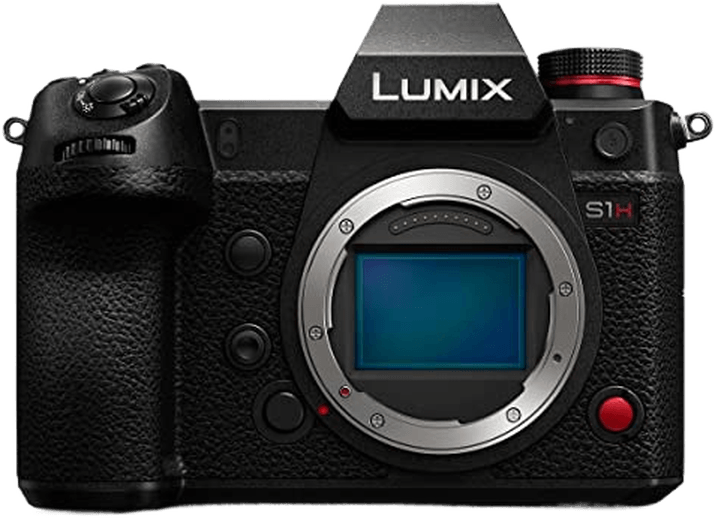Panasonic Lumix DC-S1H Specs and Scores

The Panasonic Lumix DC-S1H receives a score of 77/100 for its general specifications. This mirrorless camera was announced on August 20, 2019, and released the same year with a launch price of $3,999. Measuring 151 x 114 x 110mm and weighing 1052g (2.32lbs), the DC-S1H offers competitive specs in today’s market.
When considering the specifications and release date, the Lumix DC-S1H holds its ground against other cameras in the market. Despite being a couple of years old, the camera still provides good value and performance for its price.
Panasonic Lumix DC-S1H Overview and Optics
The optics of the Panasonic Lumix DC-S1H receive a score of 74/100. This camera features a 24-megapixel full-frame CMOS sensor, paired with the Venus Engine processor. It can shoot at a speed of 9 frames per second, which is suitable for various photography situations. The Leica L lens mount ensures compatibility with a range of high-quality lenses.
In the current market, the DXOMARK score of 75 for the sensor indicates that the S1H performs well in terms of image quality. The camera also benefits from in-body image stabilization, which helps to reduce camera shake and produce sharper images. Its 3:2 aspect ratio is a standard choice for most photographers, offering a balance between horizontal and vertical composition.
The Panasonic Lumix DC-S1H stands as a strong contender in the camera market, with its combination of quality optics and performance features. The camera’s specifications make it a reliable choice for photographers seeking an efficient and versatile tool for their work.
Panasonic Lumix DC-S1H Video Performance
The Panasonic Lumix DC-S1H boasts an impressive video score of 96/100. This high score reflects the camera’s exceptional video capabilities, including a maximum video resolution of 6K and dimensions of 5952 x 3988. The camera also supports a maximum video frame rate of 120fps, which ensures smooth and detailed footage for various applications.
In today’s market, the DC-S1H stands out with its advanced video features. The built-in time-lapse functionality adds to the camera’s versatility, allowing users to capture stunning sequences without the need for additional equipment or software. This makes the DC-S1H an excellent choice for videographers and filmmakers who demand top-notch performance and flexibility.
The Panasonic Lumix DC-S1H delivers outstanding video quality and a comprehensive set of features that make it a top contender in the market. Its high video score reflects its superior performance and capabilities, making it a strong choice for those seeking a reliable and powerful camera for their video needs.
Panasonic Lumix DC-S1H Features and Benefits
The Panasonic Lumix DC-S1H achieves a feature score of 87 out of 100. With a 3.2-inch touchscreen and a screen resolution of 2,330,000 dots, this camera delivers crisp and clear visuals. The flip screen adds versatility, making it easier for users to capture images and videos from different angles. However, the camera lacks GPS functionality, which might be a drawback for some users.
Despite the absence of GPS, the Lumix DC-S1H compensates with WIFI and Bluetooth connectivity. These features enable seamless sharing and transfer of files, making it a suitable choice for modern photographers. In the competitive market of today, the Panasonic Lumix DC-S1H stands strong with its high-quality specifications and user-friendly features.
Taking all these features into account, the Panasonic Lumix DC-S1H proves to be a reliable and versatile camera. Its feature score of 87/100 reflects its excellent performance and ability to meet the demands of today’s photographers.
Panasonic Lumix DC-S1H Storage and Battery
The Panasonic Lumix DC-S1H receives a storage and battery score of 71/100. It features two memory card slots, accepting SD, SDHC, and SDXC cards, with UHS-II compatibility. This offers users flexibility in storing their images and videos.
In terms of battery life, the S1H is equipped with a DMW-BLJ31 battery, providing up to 400 shots per charge. This capacity is relatively standard in today’s market, ensuring users can capture a sufficient number of images during a single outing. Additionally, the camera supports USB charging, allowing for convenient recharging on-the-go.
Considering these specifications, the Panasonic Lumix DC-S1H offers a reliable storage and battery system that meets the demands of modern photographers and videographers.
